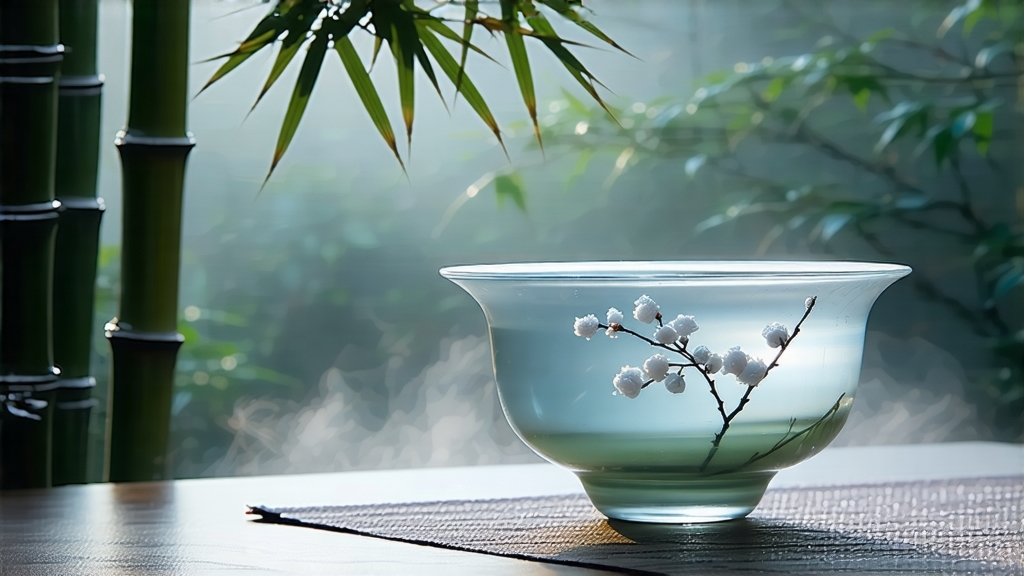
Silver Needle, known in Chinese as Bai Hao Yin Zhen, is the most aristocratic expression of white tea, a category celebrated for its minimalist processing and ethereal character. While the West often lumps all pale-coloured infusions under the generic label “white tea,” connoisseurs recognise that only three traditional counties in China’s south-eastern province of Fujian—Fuding, Zhenghe and Jianyang—possess the terroir, cultivars and inherited craft necessary to coax this luminous beverage from a single, unopened bud.
Historical records trace the commercial production of Yin Zhen to the late Song dynasty, when pressed white cakes were tribute-shipped to the imperial court along the same mountain routes that later carried jasmine-scented green tea to the Arabian Sea. By the early Qing, loose-leaf fashion had arrived; court physicians praised the bud’s “cooling” nature, prescribing it for fever and eye fatigue. Export documents from 1850 list “Pekoe Silver Tips” among the most expensive teas on the London market, fetching twice the price of Keemun black. Yet fame was double-edged: foreign merchants frequently adulterated the fluffy buds with willow-leaf cuttings, prompting Fuding magistrates to seal each chest with lead strips stamped “pure bud guarantee.” The 20th-century wars disrupted trade, and Silver Needle retreated into local memory until the 1970s, when state tea institutes revived ancient cultivars and built climate-controlled withering rooms that now echo with the faint rustle of bamboo trays.
Three cultivars dominate today’s Silver Needle. Fuding Da Bai Hao, the “Big White Down,” yields the plumpest buds, their ivory cloak so dense it resembles hoarfrost. Zhenghe Da Bai, slightly slimmer, develops higher levels of floral volatiles under the county’s cooler nights. A third cultivar, Fuding Xiao Bai Hao, or “Small White Down,” is reserved for limited micro-lots prized for their marine-mineral finish reminiscent of Japanese sencha. Farmers propagate these bushes from layered cuttings rather than seed, ensuring clonal uniformity and preserving the genetic fingerprint that gives each origin its signature cup.
Craft begins on still-dawn mornings in late March, when the air carries the chill of winter’s farewell. Pickers, almost always women whose fingers are naturally warmed by circulating blood, snap off the terminal bud plus exactly one embryonic leaf if present; anything longer is diverted to lower-grade White Peony. Within thirty minutes the harvest is slipped into shallow bamboo creels lined with palm fronds to prevent compression. Back at the farmhouse, buds are spread one layer thick on water-grass mats woven by village elders. Here they rest for thirty-six to forty-eight hours, depending on humidity, in a process called “withering in the life of the breeze.” No heat is applied; instead, louvred walls channel mountain air across the tea, coaxing moisture downward while polyphenol oxidase nibbles at the edges of cell walls. The goal is not oxidation in the black-tea sense but a gentle enzymatic massage that transforms grassy aldehydes into honey-lactones. When the bud’s moisture drops to around forty percent, workers transfer it to pine-drying chambers where temperature hovers at 40 °C—just hot enough to fix the aroma yet cool enough to preserve the down. The final product contains only five percent residual moisture, allowing the tea to travel the globe without losing its springtime soul.
Westerners often assume that white tea is too delicate to withstand boiling water; in truth, Silver Needle rewards courage. Begin with a clear glass gaiwan so you can watch the buds dance. Use 4 grams—roughly two heaping tablespoons—for each 150 ml of water. Bring freshly drawn water to 90 °C, then pause ten seconds; this slight cooldown prevents scorching while still coaxing the buds’ inner nectar. Rinse once, discarding the flash infusion; this awakens the down and rinses away any dust accumulated during transport. The first formal steep lasts forty seconds. Observe how the buds stand upright like miniature ivory pagodas before slowly sinking. The liquor glows pale primrose, almost colourless until you hold it against white porcelain. On the nose you’ll find fresh lychee, wet slate and a hint of sage. Sip, letting the liquid pool beneath your tongue; a soft creaminess spreads outward, followed by a cucumber-crisp finish that lingers for minutes. Subsequent infusions lengthen by ten seconds each; quality Silver Needle yields five to